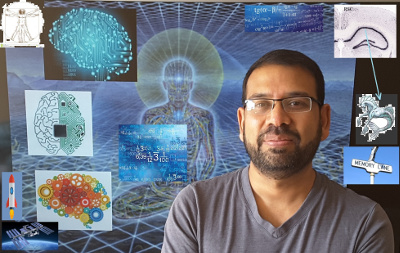

Their work was recently published in eLife, an online, open-source platform that publishes work of the highest standards and importance in all areas of biology and medicine.
The paper, A Matlab-based toolbox for characterizing behavior of rodents engaged in string-pulling, describes a state-of-the-art method for analyzing mouse string-pulling. In neuroscience, a toolbox is a computerized method that presents a student with a simple set of standard procedures for performing an analysis — in other words an app. Here, the researchers used advanced machine vision methods to automatically extract movement kinematics and whole-body movement.
The string-pulling task requires a subject to reel in a string using hand-over-hand movements in order to obtain a reward at the end of the string. The task has been given to dozens of different species of animals, including bumble bees, adult humans (who pull a rope), and in this case mice. The task simultaneously assesses body posture, skilled hand use by both hands, as well as inter-hand coordination. String pulling is used for purposes from physical exercise to the assessment of cognitive and motor function in neurological disease.

The main drawback of the string-pulling task is in scoring the many concurrent movements that occur and, deriving a score for that movement and determining whether the behaviour is normal.
“Currently, most of the analysis is carried out with manual scoring of each frame of a video recording and is very tedious,” says Whishaw. “Automated analysis of string-pulling is a useful way for obtaining an objective assessment of movements, for identifying the contributions of different body parts to string advancement and is rapid.”
“The toolbox features a graphical user interface for video data analysis and follows the analysis framework with two major components, a global assessment of whole-body position and speed and fine kinematic assessment of movements of body, ears, nose and hands,” says Inayat.

“We demonstrate that with whole-body measures, we can detect overall differences in position and motion patterns of two different strains of mice,” adds Mohajerani. “In the future we will be able use the toolbox to assess humans who have neurological disorder that affects movement (e.g., Multiple sclerosis, Huntington disease, Parkinson's disease) or those recovering from nervous system injury (e.g., spinal cord injury, stroke, concussion), as well as to quickly assess whether a treatment is effective. In principle, the toolbox can be modified as an app for a smart phone, so that a test and its analysis can be done by individuals at home with minimum hardware and software setting.”
“We are overwhelmed with the request of pioneers in the field around the globe in using this tool in their labs. Now, we are looking for funding to add artificial intelligence tools to the current version of the toolbox to be used for different species (e.g., primates, humans) and establish this platform for use in a clinical setting,” says Mohajerani.
For more on the new toolbox, visit eLife to read the full paper.
